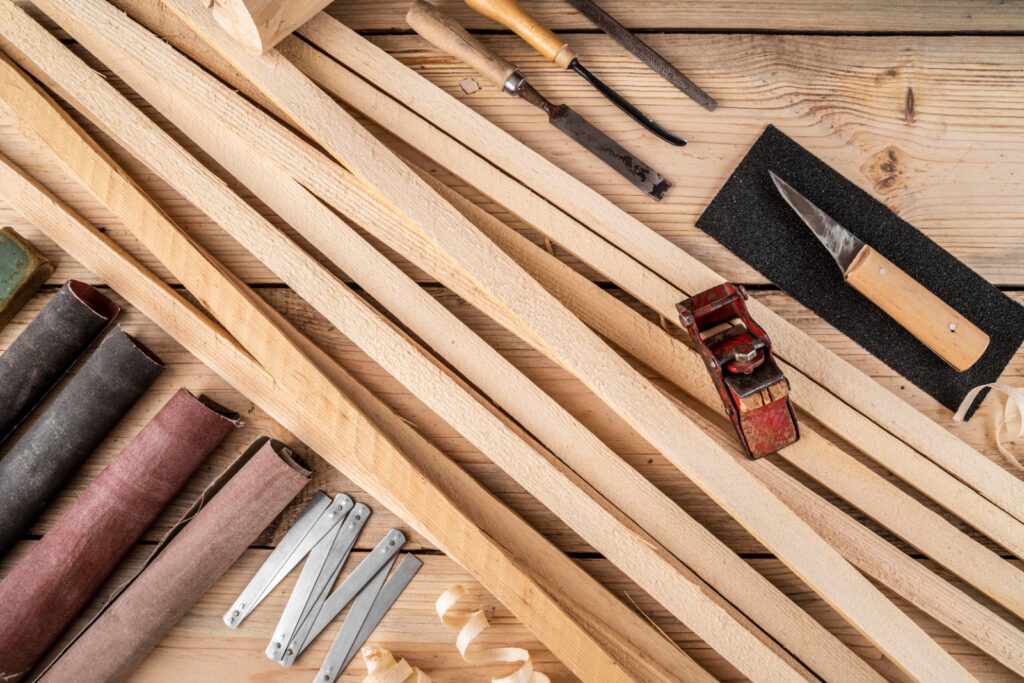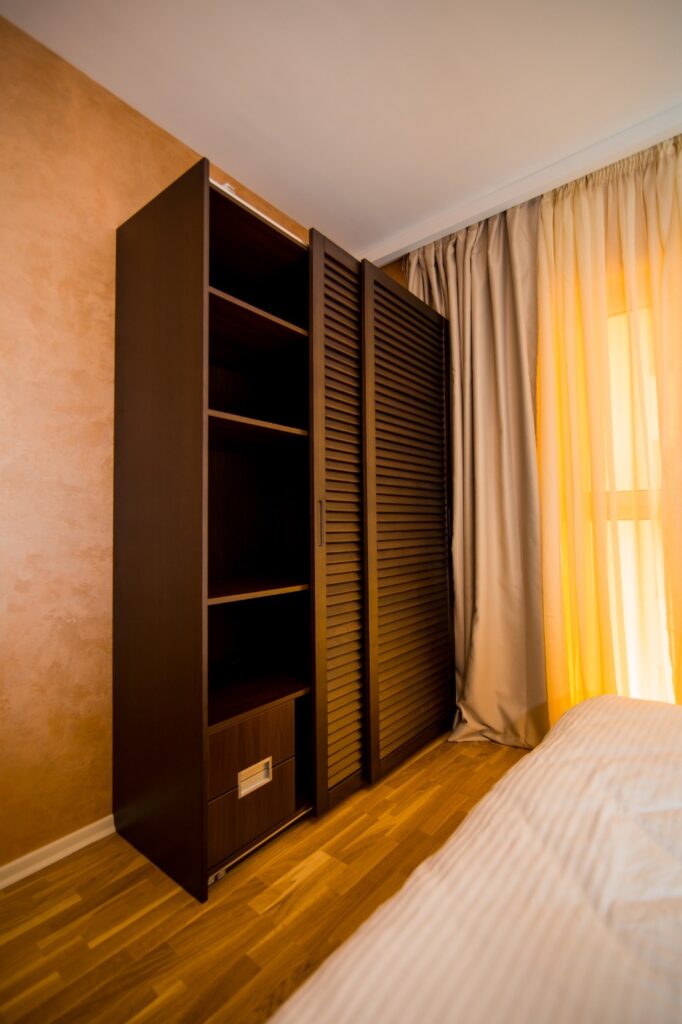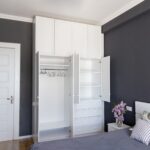This is a great way to maximize the closet space you have by building a closet system. No matter what size closet you have, whether it’s a tiny clothing closet or a massive walk-in closet, a closet organizer can change everything. Learning how to build a closet system is one of the most effective ways to create space you didn’t know you had. In this article, you will learn how to build an organizer closet that matches your needs.
1. Assessing Your Closet Needs
Before jumping into how to build a closet system, think about what’s not working with your storage right now. Determine what you want to accomplish with your closet organization system. Before you jump in and start building, consider what you actually want to get out of your closet organization system. Think about what items need to be stored: clothes, shoes, and accessories.
This will guide you in determining the components of your closet organizer, including shelves, drawers, and hanging rods. If there are many shoes, you can also think of shoe shelves or shoe cubbies.
Key Considerations:
- Types of Clothing: What types of clothing do you have in what do you want to store
- Shoe Storage: Use shoe cubbies or shelves to keep shoes organized and accessible.
- Accessories: Consider how you will keep accessories like belts, hats, and bags
2. Choosing the Right Materials
Select the Right Materials When You Are Building Your Custom Closet. Some popular choices are solid wood, melamine, and plywood.
When you’re figuring out how to build a closet system, a big part of it is choosing materials that match what you can afford and what you’re comfortable working with. Solid wood is durable and timeless; melamine is lightweight and customizable.
Plywood is a great choice for a DIY project because it is affordable and easy to work with. Use wood glue to attach the pieces for strong connections. No matter if you want a clean, finished style or a more hands-on, DIY vibe, how to build a closet system begins with picking materials that match the look you’re going for.
Material Options:
- Hardwood: It gives a traditional appearance and longevity.
- Melamine: lightweight and easy to customize.
- Plywood: Inexpensive to use and easy to work with
3. Planning Your Closet Layout
To build a good closet organization system, Plan Out Your Layout. Take measurements of your closet and figure out how to utilize the space for various items.
Utilize vertical space to store more and keep items at hand. Double hanging rods, for example, will double your hanging space, which is fabulous for anyone with a great deal of clothing.
Layout Tips:
- Measure Twice: Mistakes start with incorrect measurements.
- Utilize Vertical Space: Put indoor shelves or storage units that stretch to the ceiling.
You can even customize your layout.
4. How to Build a DIY Closet Organizer
It is Fun to Make a DIY Closet Organizer. Gather your materials , such as plywood or melamine boards.
Use tools such as a circular saw to cut the boards to size and a drill to drill holes for assembly. It should all be fastened tight with wood screws or pocket screws.
DIY Steps:
- Space it Out: Make a rough design that accounts for shelves and hanging rods.
- Cut materials: Cut boards to size with a circular saw.
- Assemble: Put together the parts with drill and screws,
5. Installing Hanging Rods
Hanging rods are the hero brand of every closet system. If you have a double hanging rod set up, you should mount the rods to the wall with sturdy brackets.
This will double your hanging space, which makes it ideal for people who own a lot of clothing. One important thing to keep in mind when figuring out how to build a closet system is making sure the hanging rods are properly supported so they don’t start to sag later on. Ensure that you use heavy-duty clothes rods that are capable of handling the weight of your garments.
Hanging Rod Tips:
- Proper Mounting: Make sure to use wall anchors for secure installation.
- Adjustable: Look for adjustable rods.
6. Adding Shelves and Storage
Shelves are just as key for storing folded garments, shoes, and accessories as hanging rods. Adjustable shelves will allow you to create the storage area you need. Add shoe cubbies or storage bins for additional organization.
If it’s a walk-in, you may want to incorporate a middle shelf for less frequently used items and a top shelf for seasonal items.
Shelf Options:
- Mobile Adjustable Shelves: Adjustable shelves allow customization based on storage needs.
- Shoe Cubbies: Organize and access the shoes easily.
7. Incorporating Drawers
Drawers offer concealed storage and are ideal for socks and undergarments. When you build drawers, use a Kreg jig to drill holes for joining securely. Have the drawers on smooth-gliding slides for easy access.
Drawer Tips:
- More Secure assembly: I used a Kreg jig for a strong and durable build.
- Speaker Call-outs: Drawer slides with a handle.
8. Using Edge Banding
At the exposed edges of the plywood or melamine, apply edge banding to make your closet organizer look finished. This looks good and also protects edges from damage.
Edge Banding Benefits:
- Improved Look: Gives a polished appearance to the closet organizer.
- Protection: Protects edges from damage and stir-in.
9. Designing a Closet Organizer
As you are designing your closet organizer, consider the flow of your closet. If there are frequently used items, make sure they are within reach and that there is space for everything. A well-designed closet organizer design can turn your closet into a functional and stylish space.
Design Considerations:
- Flow and Accessibility: Ensure easy access to frequently used items.
- Customization: Tailor your design to fit your specific needs.
10. Maximizing Vertical Space
To maximize your closet space, try going vertical — add shelves or storage units that reach the ceiling. This is particularly handy for seasonal items or accessories that you don’t use as much. Shelf Supports: to make sure that the shelves are firm and will support the weight of the stored pieces.
Vertical Space Tips:
- High Shelves: Store less-used items.
- Shelf Supports: Provide stability and prevent sagging.
11. Creating a Bottom Shelf
The bottom shelf is ideal for shoes or large storage bins. Ensure that it is sturdy and at a height that will allow you to reach for things without straining yourself.
Try adding shoe shelves or shoe cubbies — it helps keep the shoes you wear every day to go in/out organized and easy to find.
Bottom Shelf Ideas:
- Shoe Storage Use: Storage for shoes or boots
- Storage Bins: Maintain orderliness and a polished look.
12. Adding Additional Storage
Consider including additional storage solutions such as over-the-door organizers or under-bed storage to maximize your space even more. These can be used for things like bags, belts, or out-of-season clothes. Storage bins will do wonders to keep clutter at bay and the surfaces looking tidy.
Additional Storage Options:
- Over-the-Door Organizers: Great for stashing accessories.
- Under-Bed Storage: Best for off-season clothing.
13. Personalizing Your Closet Organizer
Benefit #1 — A personalized closet organizer can be customized per your specific needs. Whether you love the sleek lines of a modern look or prefer the details of a more classic design, you can create your closet to fit your unique aesthetic. When you know how to build a closet system, you can design it around your daily routine, not just use it to stash your things.
Customization Ideas:
- Modern vs. Traditional: Select a style that suits the look of your home.
- Whimsical Details: Get some fun accents to improve the aesthetics.
14. Installing a Closet Rod
Make sure that when you install a closet rod, it’s well attached to the wall to support the weight of your clothes. Use a level to ensure that the rod is straight even spacing from the wall.
Closet Rod Installation Tips:
- Secure Attachment: Use wall anchors for stability.
- Level Installation: Ensure the rod is perfectly straight.
15. How to Build a Walk-in Closet Organizer
How to create a walk-in closet organizer for a walk-in closet? Consider creating different areas within the space for various clothing pieces and accessories. For instance, make sure you have a section for dresses, a section for suits, and an entire section for shoes.
Walk-in Closet Ideas:
- Organized by Zone: Select spaces for every sort of dress.
- Shoe Storage: Cubbies for easy access
16. Master Bedroom Closet Ideas
In a master bedroom closet, it’s important to create a serene and organized space. Include features such as a glass-top island for jewelry, a built-in styler for freshening up clothes, etc. Use storage bins to keep clutter at bay and look tidy.
- Make it a serene environment with workspace storage.
- Functional Features: Install a glass-top island or built-in styler.
17. Closet Organization Tips
To maintain your newly organized closet, make sure you have a cleanup schedule. Label storage bins and shelves so that items can be located easily.
- Steady Maintenance: Set a cleaning and organizing routine
- Make use of labels to mark items behind closed doors
18. DIY Closet Organizer Projects
Use a shoe rack and hanging cubbies for extra storage if you want to do it yourself. You are furnished with tailored attributes that suit your requirements and character.
DIY Projects:
Shoe Rack: This is ideal for increasing shoe space.
Hanging Cubbies: This is great for accessories or folded clothes.
19. Closet Makeover Ideas
A closet makeover is a great opportunity to revamp a space. Give old shelves a more modern feel with new shelves. You can add some sliding doors for a more streamlined style.
Makeover Ideas:
- New Shelves: Replace your solution with something trendy.
- Sliding Doors: Improve the look and maximize space.
20. Ready-Made and Closet Kit Solutions
For other people who want a faster fix, closet kits exist. These ready-made systems are easy to assemble and customize to your closet size.
Closet Kit Benefits:
- Installation: It is an Easy and Simple configuration.
- Personalization: You need to compare and contrast the parts that work for you.
21. Small Closet Solutions
In a teeny closet, every square inch plays an important role. Invest in vertical storage solutions. Also, make the most of your hanging space by using slim velvet hangers. You also need to include shoe cubbies or shoe shelves. It helps keep shoes organized and easy to find.
Small Closet Tips:
- Seek vertical storage: Use shelves or storage units that are right up to the ceiling
- Slim Hangers: Use velvet hangers to save space
22. Closet Door Options
Additionally, if you have space limitations, you may opt for sliding doors or pocket doors.
Closet Door Ideas:
- Sliding doors: Ideal for conserving space and giving a modern touch.
- Pocket Doors: Perfect for creating a more open floor area.
23. Safety Precautions
When you use power tools, use safety equipment at all times. Use goggles and ear protection, too. Ensure that your workspace is bright and free from clutter.
Safety Tips:
Before you Get Started, make sure you have the following:
- Use safety glasses and ear protection. Protective Equipment
- Keep a Clear Workspace: Avoid obstructions in the vicinity.
24. How to Execute a Full, Successful DIY Project
- Plan Ahead: First, look at the size of your closet. Next, think about how all your things will go inside. Make sure everything fits well before you put anything in.
- Use High-Quality Materials: Use materials that are durable and easy to work.
- Safety First: Wear safety equipment whenever you’re working with power tools.
- By yourself: Closet organizers can be personalized to suit your unique storage needs and style preferences.
Using a closet organizer helps you be creative. It makes your closet work better and can also make your home worth more. Big or small, every closet needs the right organizer. The right one will keep your closet neat and tidy.
25. Common Mistakes When Building a Closet
Building your own closet is exciting, but mistakes can waste storage space and make organizing hard. Whether you are creating a walk-in closet or upgrading a master closet, avoiding errors will help you build a strong and useful closet system.
1. Incorrect Measurements
One big mistake is not measuring properly. Always use a tape measure to check closet dimensions before cutting materials. Shelves must be the same width to fit right. If not measured well, the whole closet may not be usable.
2. Weak Installation
If you do not use drywall anchors when attaching clothes racks, shelves, or hanging clothes rods to the back wall, they may fall. Also, leaving screw holes and nail holes open makes the entire closet look messy. Use a plug cutter for a neat finish.
3. Wasting Usable Space
A middle shelf and an upper shelf help increase closet storage. If placed too high, they reduce usable space. Good shelf supports keep shelves steady. A flat surface is best for setting shelves.
4. Ignoring Safety
Always wear safety gear when working. A DIY closet organizer is a great way to save money, but safety comes first. A well-planned, entire walk-in closet makes the whole closet neat and strong.
26. Why You Should Choose One-Closet for Your Closet Project
✔ 20+ Years of Trusted Experience:
We have been helping homeowners for over 20 years. We build closets that are beautiful and very useful.
✔ Top-Quality Materials That Last:
We use only strong, high-quality materials. Your closet will last for many years and still look great.
✔ Made Just for You:
Every closet is different, just like every home. We create custom closets that fit your space and style.
✔ Expert Installation by Skilled Technicians:
Our team takes care of everything, from start to finish. You can relax while we build your dream closet.
✔ Closet Repairs & Upgrades:
Already have a closet? We can repair or upgrade it to make it feel new again—without starting over.
✔ 5-Year Warranty for Peace of Mind:
We stand by our work with a full 5-year warranty, so you can feel safe with your investment.
Conclusion on how to build a closet system
A closet system is a great DIY project that can make your space feel completely different. If you follow these steps and tips, you can create an effective and stylish custom closet organizer. That can fulfill your needs and improve the aesthetic of your home. When you learn how to build a closet system, you take charge of your space and make your everyday life a lot more organized.
Frequently Asked Questions
What materials are best for closet organization construction?
Examples of popular materials are solid wood, melamine, and plywood. Each one has its own pros for durability, cost, and ease of use.
How do I make the most of my closet space?
A shelf or storage unit, such as a ceiling, requires a vertical space to be placed. Use double-hanging rods and adjustable shelves to tailor your storage.
What are some key elements of a closet organizer?
Hanging rods, shelves, drawers, and storage bins are essential components. These help keep your belongings organized and easily accessible.
How do I keep my newly cleaned closet clean?
Make sure to have a routine to arrange regularly, and use labels on storage bins as well as shelves to identify items.
What are the advantages of a custom closet organizer?
A custom closet organizer that gives you the opportunity to create the type of closet you’re truly after.










